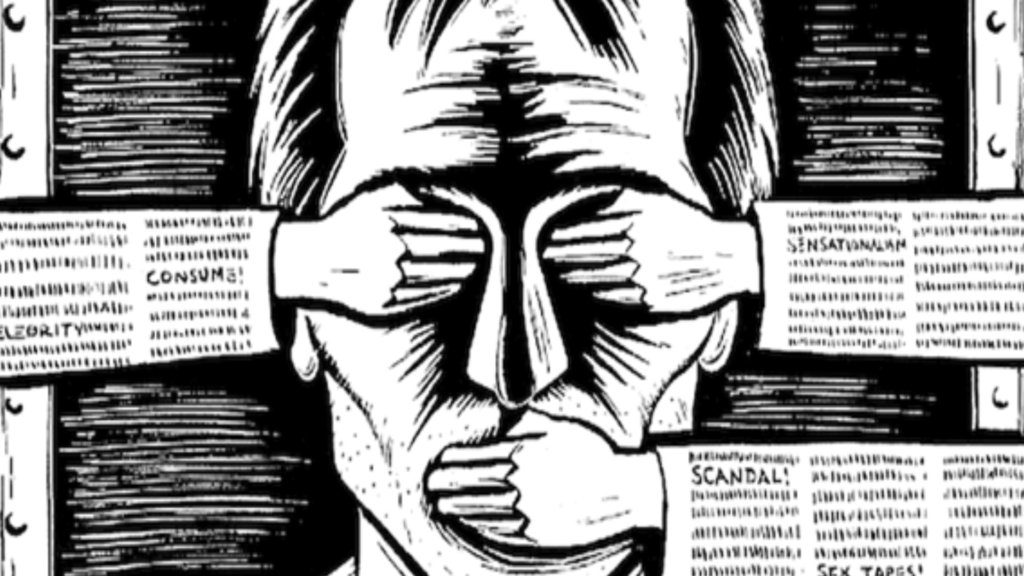
The War for Hearts and Minds: Ideological Domination in Kashmir
Saifullah Kakroo
In today’s world, the most destructive form of warfare is not fought with guns and bombs, but with ideas and beliefs. Nations employ various strategies to subjugate and control others, but the most insidious of these is ideological warfare—a silent, relentless assault on the minds and souls of the oppressed. In this type of war, non-military means are wielded with precision to dominate and reshape a people’s identity, culture, and values. This war is not fought on the battlefield but in schools, media, and cultural institutions, where thoughts, beliefs, and morals are subtly but systematically manipulated.
Nowhere is this more evident than in Kashmir, where a comprehensive ideological campaign is underway to solidify Indian dominance. Unlike traditional warfare, which targets the physical existence of a people, ideological warfare strikes at their core—attacking religion, culture, and moral values. It aims to strip individuals of their identity, transforming them into mere imitations of their oppressors. This form of warfare seeks to eradicate any resistance by weakening the internal strengths that drive a nation to defend its existence.
In Kashmir, this ideological assault is being executed with the same precision and planning as any military operation. Cultural activities, educational reforms, and the widespread influence of NGOs are the frontline weapons in this war. These organizations work tirelessly across religious, political, social, and educational fields, aiming to erase the Islamic identity and cultural heritage of the Kashmiri people. Over time, these efforts are designed to ensure that resistance becomes unthinkable, and subjugation is complete.
A key battleground in this war is the educational system. Schools in Kashmir have increasingly become centers of ideological indoctrination rather than places of learning. Cultural activities are frequently organized under the guise of ‘cultural awareness,’ where students are made to participate in activities that were once alien to Kashmiri society. These include reciting the Indian national anthem “Jana Gana Mana,” hoisting the Indian national flag, and even performing dances—acts that are symbolic of a larger effort to reshape the moral and cultural fabric of future generations.
The scale of this assault became glaringly evident in August, when a series of flag marches were organized by military forces across various locations in Kashmir. Schoolchildren, many of them teenage girls, were made to carry the Indian flag and march through streets and marketplaces—a sight that would have been unthinkable just a few years ago. These events, which took place in locations such as SKICC to Dalgate, the Chenab Railway Bridge, Batamaloo, Baramulla, Wusan in Ganderbal, the Martand Temple in Islamabad, Tral in Pulwama, and several others, were deliberate efforts to embed a new identity in the hearts and minds of the young.
In a particularly striking example, over 11,000 girl students participated in what was dubbed the world’s largest Kashmiri folk dance (Rouf) at the Sports Stadium in Baramulla. Organized by the Indian Army in collaboration with the civil administration, students from 171 schools participated simultaneously via ICT labs. While the event was celebrated as a cultural milestone, its underlying purpose was clear: to promote a specific narrative and to mold the youth into accepting and internalizing a new identity.
But the ideological war does not stop at cultural activities and education. It extends into the very names and symbols that define the region’s identity. Historical names are being changed, erasing the cultural memory of the Kashmiri people. For instance, the iconic Koh-e-Maraan is now being referred to as Hariparbat, and Takht-e-Soliman as Shankaracharya Hill, a move that seeks to overwrite the Islamic history of the region with a new narrative. Similarly, the widespread opening of wine shops in Kashmir—a place where alcohol consumption is traditionally and religiously frowned upon—is another tactic aimed at eroding the moral and cultural values that have defined Kashmiri society for centuries.
Educational initiatives like the Rashtriya Sewa Bharati’s Ekal Vidyalaya Abhiyan are further deepening this ideological onslaught. This campaign aims to instill ‘Kashmiriyat,’ patriotism, and national duties among Kashmiri Muslims and move them away from any thoughts of resistance. Managed by the Rashtriya Swayamsevak Sangh (RSS), the initiative has seen a rapid expansion, with over 1,250 schools established in the Valley—an area where over 95% of the population is Muslim. The number of these schools has increased by 53% in just two years, from 800 in 2022 to 1,250. The teachers in these schools, a significant percentage of whom are women, are tasked with shaping the minds of the next generation and ensure that the ideological battle is fought from within the community itself.
Amid this broader ideological struggle, individual cases reflect the shifting dynamics in Kashmir. Mohammad Faisal Makroo, known as Macstar, exemplifies this trend. The son of a business owner from Awantipora, Makroo was born and brought up in Delhi. He gained prominence in the early 2010s for his rap music, which often promoted themes of drug use, alcohol, and relationships. However, by 2021, he pivoted sharply from this image, deleting his old videos and adopting a more pious persona on social media, including undertaking Umrah.
Recently, Makroo re-emerged with a new music video titled “Wanai Wanai,” featuring Nikhil, a Jammu-based Kashmiri Pandit, and Shamiska Sharma, a Jammu-based social media influencer and Miss India 2021. This shift back to his previous career, alongside high-profile collaborations, can be seen as part of a broader agenda. Makroo has also been involved with the Rashtriya Swayamsevak Sangh (RSS) and BJP leaders, aligning himself with their ideological framework. These developments illustrate the vast and systematic nature of the ideological warfare being waged in Kashmir. The long-term implications for the region’s cultural and religious identity are profound. As the tools of this war continue to shape the thoughts, beliefs, and values of the Kashmiri people, the region stands at a crossroads. The question remains: will the cultural and religious identity that has defined Kashmir for centuries survive this silent siege, or will it be irreparably altered by the relentless tide of ideological domination?



